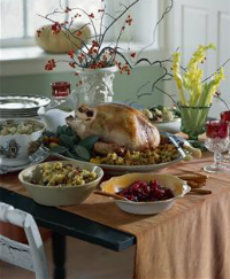Ask Shelley Case: Sweet Endings – Healthy Gluten-Free Desserts
Tuesday, February 12th, 2013
Question: Valentine’s Day is here and I want to make some healthier gluten-free baked goods. Do you have any suggestions?
Answer: With Valentine’s Day just a couple of days away, many of us want to bake sweet gluten-free treats. Fortunately it’s possible to make gluten-free desserts more nutritious and just as tasty as their gluten-containing counterparts!
Check out the following baking tips and discover how your gluten-free bake goods can be made with less sugar, saturated fats and refined carbohydrates. Now that’s sweet!
Yogurt… It’s not just for breakfast: To reduce calories and fat, yogurt can be used as a substitute in baked goods for sour cream, butter and buttermilk. Yogurt, especially creamier low-fat Greek Yogurt, is a fantastic substitution for whipped cream. Try this Gluten-Free Yogurt Dip recipe for your sliced fruit!
Keep your baking well oiled: Looking to get rid of the oil in your baked goods? A great healthy substitute for cooking oil in baking is unsweetened applesauce. Use 3/4 to 1 cup of applesauce for every 1 cup of oil. Want inspiration? Try this Gluten-Free Chocolate Cake recipe.
Refine yourself: When baking gluten-free, choose whole grain or bean flours instead of refined white rice flour. Some gluten-free flours that are healthy alternatives for baking include: Brown rice, pea flour, white bean flour, amaranth or gluten-free oats. Try these Best Chocolate Brownies made with pea flour… Delicious!
Use your bean: Black beans make a smooth, rich base for baked goods! An extra bonus? The fiber the beans provide. Check out this recipe… so rich & chocolaty: Black Bean Brownies with Espresso Ganache.
Sweet substitutes: Consider sweetening baked goods with fruit, such as mashed bananas, apple sauce, pineapple, chopped dates, raisins or pears. The fruit adds a pleasant sweetness as well as added fiber and nutrients. Want to try sweetening your baked goods with fruit? Then check out this Banana Chocolate Chip Muffin Recipe.
Fruit frenzy: Fruit makes a healthy dessert when sliced and topped with a dollop of vanilla low-fat yogurt, or drizzled with honey. Get innovative and serve grapes, pineapple chunks, strawberries and melon balls on skewers, and serve with a sweetened low-fat yogurt dip. Think beyond the basic fruits of apples, bananas and pears, and experiment with tropical, more exotic, fruits such as mangos, kiwis, and papayas. Your taste buds will thank you! Check out these recipes… Creamy Apple Cinnamon Fruit Dip and Exotic Broiled Fruit Plate.
Think dark chocolate: If using chocolate in your baking recipes opt to use dark chocolate, opposed to milk or white chocolate. Dark chocolate contains more cacao which is full of antioxidants and may play a role in reducing the risk of cardiovascular disease. Like Dark Chocolate? Check out these recipes: Flourless Chocolate Coconut Cupcakes with Vegan Chocolate Frosting and this Flourless Chocolate Cake.
Just a little will do it! Consider desserts as a special treat. Appreciate your gluten-free dessert creation by eating slowly and enjoying every single bite.
Ask Shelley Case is a feature of BeFreeForMe.com. It is published the second Tuesday of each month. Shelley Case is a Registered Dietitian, Consulting Dietitian, Speaker and Author of Gluten-Free Diet: A Comprehensive Resource Guide. Visit Shelley and get more gluten-free tips & info at: www.glutenfreediet.ca
 gluten-free lifestyle. I’m feeling overwhelmed! Do you have any tips, ideas and recipes for me?
gluten-free lifestyle. I’m feeling overwhelmed! Do you have any tips, ideas and recipes for me? Question: Do you have any suggestions on celebrating a safe gluten-free Halloween? How about a gluten-free candy list?
Question: Do you have any suggestions on celebrating a safe gluten-free Halloween? How about a gluten-free candy list? cute bags for party favors or to hand out to Trick or Treaters. This means that there is no ingredient label on the candy. If this happens follow this mantra: No label = Not Able.
cute bags for party favors or to hand out to Trick or Treaters. This means that there is no ingredient label on the candy. If this happens follow this mantra: No label = Not Able. Question:
Question:
 Question:
Question:  Question: Can you suggest some resources that will help me understand more about celiac disease, gluten sensitivity and the gluten-free diet?
Question: Can you suggest some resources that will help me understand more about celiac disease, gluten sensitivity and the gluten-free diet?
 Question:
Question: Question:
Question: Question:
Question:
 Question:
Question: 